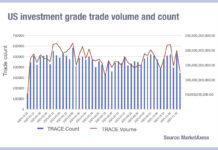 The key takeaway from the first plenary session at the Fixed Income Leaders Summit in Amsterdam was clear; in 2026, uncertainty has become a developed market problem while the emerging market environment seems more benign.
The key takeaway from the first plenary session at the Fixed Income Leaders Summit in Amsterdam was clear; in 2026, uncertainty has become a developed market problem while the emerging market environment seems more benign.
Three panellists gave their outlook for 2026. Uncertainties they planned for were all related to developed markets evolutions from US and European central banks policy changes to the future of the AI turbocharged capex boom or stablecoins

Allianz’ deputy CIO for emerging markets fixed income Giulia Pellegrini said, “Our baseline is softer US growth and pressure on the Fed to ease, which lets an asset class like mine perform strongly. We’re constructive for 2026”.
Outside of Turkey or Argentina, she indicated that she expects emerging market growth to be about 2.5% over developed market while keeping a benign outlook.
She added, “EM central banks have built comfortable real-rate cushions, roughly 10% in Brazil, 3.5% in South Africa and Mexico, so they can ease into softer global growth”
This positive attitude has been fertile ground for EM issuance with September the largest month for issuance so far this year.”
This is reflected in trading volume too with weekly volume in EM printing US$3.8bn on average per week in September versus US$2.9 bn in August, according to data from MarketAxess’s TraX tool, which measures activity across markets.
Despite this, exogenous effects will still have an effect as emerging market debt is a spread product over US rates.

As such, uncertainties highlighted by Philippe Waechter, chief economist at Ostrum, including what might happen at the Fed when Jerome Powell finishes his term in May 2026 as well as the impact of a new funding channel for US debt thought stablecoins would have an impact on EM debt.
Seamus Mac Gorain, global head of rates at JP Morgan asset management was more positive arguing that there are actually guardrails protecting the fed independence.

He said: “Pressure on central banks isn’t new, and there are strong institutional guardrails. It’s not so easy to ‘take over’ a central bank.”
For EM portfolio managers and their traders, uncertainties crystallising at times are sought as an opportunity to invest in EM paper. Pellegrini agreed about this tactical view on 2026 in her bullish stance.
“There will be volatility, but we see it as an opportunity,” she said. “It’s how active management can deliver alpha. Local-currency EM has been super resilient, and we think it continues to drive performance.”
Pellegrini will not be on her own chasing opportunities to pick up EM debt. At another panel on diversification, Desmond Lawrence, senior investment strategist at State Street Investment Management echoed her and went further in its view on EM debt.
He said: “Ironically—and slightly perversely—EM debt has, in some respects, better credentials than DM debt. Debt-bearing capacity does differ, and that matters. But the inflation trajectory in many emerging economies is clearly moving in the right direction, in sharp contrast to DMs. Even in the plain-vanilla space, there’s a case for EM debt.”
©Markets Media Europe 2025













